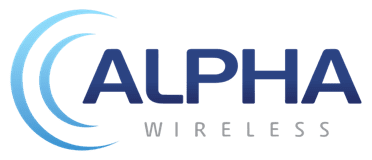The CBRS/3.5 GHz spectrum is filling broadband coverage gaps, but will it perform to expectations? Get it right the first time with Alpha Wireless.
The Fixed LTE market is predicted to reach $81.36 billion by 2025, so it’s not surprising that operators are leveraging 3.5 GHz spectrum to fill broadband coverage gaps. Operators are installing or considering the technology for rural areas and even congested urban areas that have traditionally been underserved.
The benefits are clear – plentiful spectrum, coverage in sparsely-populated areas, and relatively low entry cost. But there are also challenges that can impact your network’s performance and reliability. The stakes are high. Your network can experience up to a 30% degradation in performance if you install the wrong antennas
Knowing what you’re getting into ahead of time and working with an experienced partner gives you the tools to fulfill on the rich promises of this new spectrum.
New Thinking About Coverage and Throughput
Using a broad 90-or-120-degree beamwidth to construct a network is traditional thinking. In other technologies and using varying spectrum ranges, it is an effective strategy. With CBRS/3.5 GHz general-access spectrum, a broad beamwidth causes overlap with other sectors, resulting in interference and eroding service levels.
When building a 3.5 GHz network, choosing the right antennas at the outset sets you up for success. Antennas with a narrow beamwidth limit the overlap between sectors. When the antennas offer side lobe control, further limiting overlap, you achieve the highest service levels. Alpha Wireless’s AW3711 antenna is designed specifically for 3.5 GHz and offers a narrow beamwidth and side lobe control, giving you the ability to deliver on service level promises.
The stakes are high. Your network can experience up to a 30% degradation in performance if you install the wrong antennas.
Know Antenna Patterns Ahead of Time
Engineering for traditional spectrum ranges that perhaps allowed four frequencies on one cell site sets you up for failure in the 3.5 GHz spectrum. In the 3.5 GHz range, it is critical to use predictive analysis to know antenna patterns before you purchase your antennas. This process enables you to forecast performance in the particular environment where the network will be installed.
Predictive analysis is a robust RF simulation using antenna patterns, but they must be accurate. Alpha Wireless does prediction verification and provides a detailed pattern file to put in your prediction planner. You can do this yourself or have a services company do it for you. The important thing is to know how your network will perform before you complete your network design and purchase equipment.
Proper SAS Records
CBRS/3.5 GHz is shared spectrum rather than being owned by a particular entity. To prevent interference with other users, it is important to have a record of which radios cover what areas. the Spectrum Access System (SAS) manages CBRS wireless communications. A CBRS device has to be authorized by SAS before it can begin to transmit.
A Certified Program Installer (CPI) has to populate the SAS record. CPIs go through a two-day course to make sure they’re adhering to FCC guidelines. Accurate and complete information must be entered into the SAS. We have seen situations when entering incomplete or inaccurate information in SAS significantly degraded network performance. Adding the correct information gave the coverage and output the operator needed.
Alpha Wireless’s AW3711 antenna is designed specifically for 3.5 GHz and offers a narrow beamwidth and side lobe control, giving you the ability to deliver on service level promises.
Smaller Coverage Area and Free Space Loss
Because of the nature of 3.5Ghz, the signal provides more bandwidth, which is great for capacity, but 3.5 GHz reduces the propagation range when compared to traditional cellular bands. To make matters more challenging, the power level of radios in this band has to be much lower. A traditional cell site might cover 20 square miles. It may take 30 3.5 GHz sites to cover the same area.
Spectrum in the 3.5Ghz range is also more susceptible to free space loss. Free space loss occurs when RF signals come up against obstacles. Classic cases of free space loss are dense trees, rain, and snow. This band may also make it more challenging for signals to penetrate into buildings due to glass and wall reflection.
Avoid Early Rip and Replace
Antennas need to be built to withstand the elements, including UV, wind load and severe weather conditions. You may pay a lower cost for antennas up front, but a lower-quality antenna may break down prematurely, eroding service levels and requiring early replacement. The cost of the antenna isn’t the end of it, though. Installation costs can easily rival equipment costs.
There is a hidden cost to lower-quality antennas, and that is loss of customers and reputation. You may not be aware that there has been an impact to service until you begin to lose customers and revenue.
Take a Partner with You
When you’re entering unknown territory, take an experienced partner with you. Alpha Wireless has been installing 3.5 GHz antennas globally for more than 15 years. We know the technology and we have the antennas. Contact us today. Our experts are standing by.
